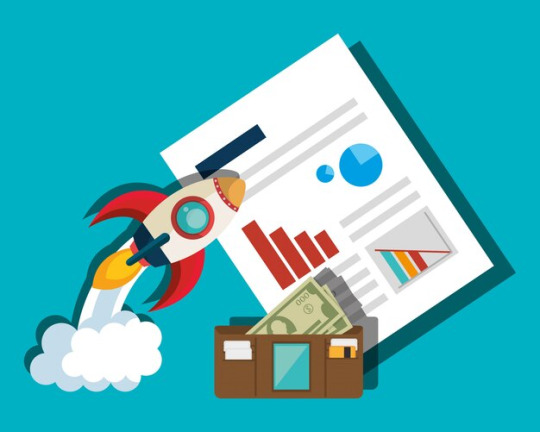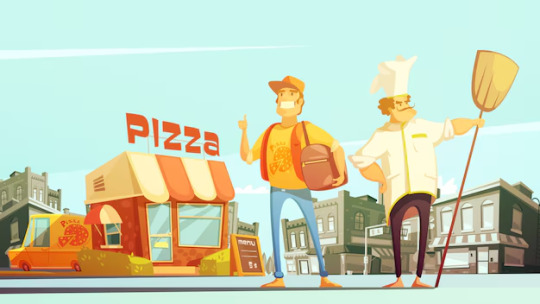Don't wanna be here? Send us removal request.
Text
How Much Does a Doordash Clone App Cost? | Build with Enatega
The food delivery market has seen explosive growth over the past few years, with platforms like DoorDash, UberEats, and Grubhub leading the charge. For entrepreneurs, food delivery businesses, and tech startups, creating a Doordash clone app could be the perfect opportunity to tap into this thriving market. But how much does it actually cost to develop one?
This blog will take you through the features and functionality of a Doordash clone, the various factors influencing development costs, and why a ready-made solution like Enatega might be your ideal choice. Let's break it all down.
What is a Doordash Clone App?

Think of a Doordash clone app as a prebuilt framework designed to replicate the core functionality of a popular app like DoorDash, but with opportunities for customization to align with your brand and business model.
Key Features of a Doordash Clone App Include:

Customer Panel:
Advanced search options for restaurants and cuisines
Real-time order tracking
Multiple payment gateways
Restaurant Partner Panel:
Order management and live status updates
Menu customization
Earnings reports and analytics
Delivery Partner Panel:
GPS-enabled navigation
Order history and earnings insights
Availability toggles and communication tools
Admin Panel:
Customer, restaurant, and delivery management
Promotion and discount management
Insights through data analytics for decision-making
These features ensure a seamless user experience while providing a full suite of tools for restaurant owners and delivery drivers alike. The beauty of a clone app lies in its flexibility—features can easily be added, removed, or tailored to meet your business's unique needs.
Factors That Influence the Cost of Development

Creating a Doordash clone app isn't as straightforward as putting together a team of developers. Various factors come into play that significantly affects the final cost.
1. Technical Complexity
Are you working on offering unique features like AI-driven delivery time estimates or gamification to enhance user engagement? The more complex your desired app functionality, the higher the development cost.
2. Design
Sleek, user-friendly UI/UX design ensures your users stick around, but achieving that level of finesse isn't cheap. Custom designs will cost more than using basic templates, especially if your app needs to reflect strong branding.
3. Platform
Are you planning to launch on iOS, Android, or both? Dual-platform development will naturally require more time, effort, and investment compared to focusing on a single platform.
4. Third-Party Integrations
Third-party integrations like payment gateways (Stripe, PayPal, etc.), mapping APIs (Google Maps), and notification services contribute to smoother operations but can add to the overall cost.
5. Ongoing Maintenance
App development doesn’t end once it's live. Regular updates, bug fixes, server costs, and customer support add to the long-term expenditure.
These aspects can cause the cost of development to range from $30,000 to $150,000, depending on your choices. But is there a more affordable path?
Cost Analysis: From Scratch vs. Using Enatega

For entrepreneurs working with limited budgets and tight deadlines, developing an app from scratch might not always be the best option. This is where ready-made solutions like Enatega come in.
Building From Scratch
Development Time: 4–12 months
Cost: $50,000–$150,000 depending on the features and complexity
Key Considerations:
Offers complete creative freedom.
High upfront costs.
Longer time to market.
Enatega Readymade Solution
Development Time: 2–4 weeks
Cost: $10,000–$30,000 depending on customizations
Key Benefits:
Prebuilt and customizable to fit your brand.
Substantially faster time to market.
Affordable and scalable solution.
With Enatega, you benefit from tried-and-tested models while still personalizing your app to fit your unique needs. It’s a solution tailored for startups and entrepreneurs who want to get their food delivery service up and running quickly without compromising on quality.
Why Enatega is a Game-Changer for Startups

Still on the fence? Here’s why Enatega stands out among its competitors:
Affordability
Enatega offers competitive pricing compared to starting from scratch, giving startups a professional-grade app at a fraction of the cost.
Quick Deployment
With Enatega, your app can be up and running in under a month, allowing you to start generating revenue sooner.
Scalability
Enatega’s architecture is designed for growth. Whether you're adding more restaurants, expanding delivery zones, or offering new features, scaling up is seamless.
Ongoing Support
With technical support and regular updates, Enatega ensures your app runs smoothly, so you can focus on growing your business.
Community-Driven
Whether through collaborative forums or real-life partnerships, Enatega fosters a sense of camaraderie among food delivery entrepreneurs, helping you learn and grow as you build your business.
Case Studies of Enatega Success Stories

1. BiteEasy – A Niche Vegan Delivery App
When BiteEasy decided to cater to vegan food lovers, they turned to Enatega to create a user-friendly app that delivered curated vegan meals. Within six months of launch, they had onboarded 150 restaurants and saw revenue growth of 40%.
2. NightBites – Late-Night Delivery Startup
NightBites used Enatega to fill the gap in late-night food delivery. With Enatega's quick deployment, they launched in just three weeks and captured a loyal customer base by offering 24/7 service.
These examples are just two of the many ways Enatega has empowered food delivery businesses to thrive.
Build Your Food Delivery Empire

The food delivery industry is booming, and leveraging a Doordash clone app might just be your ticket to carving out your piece of the pie. While building from scratch offers creative freedom, tools like Enatega make food delivery app development accessible for startups and entrepreneurs by saving time, money, and effort.
1 note
·
View note